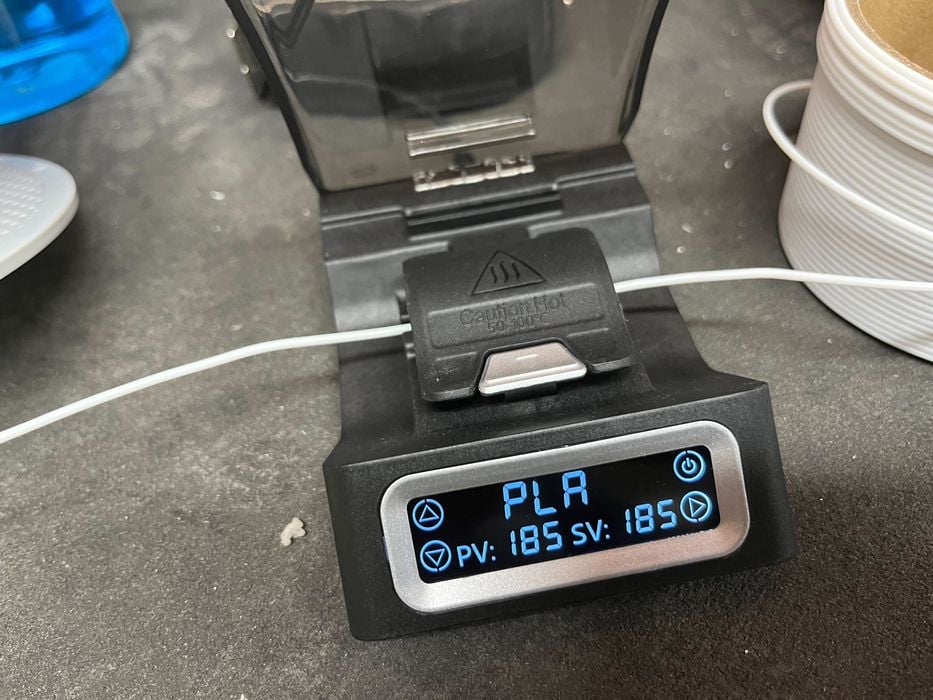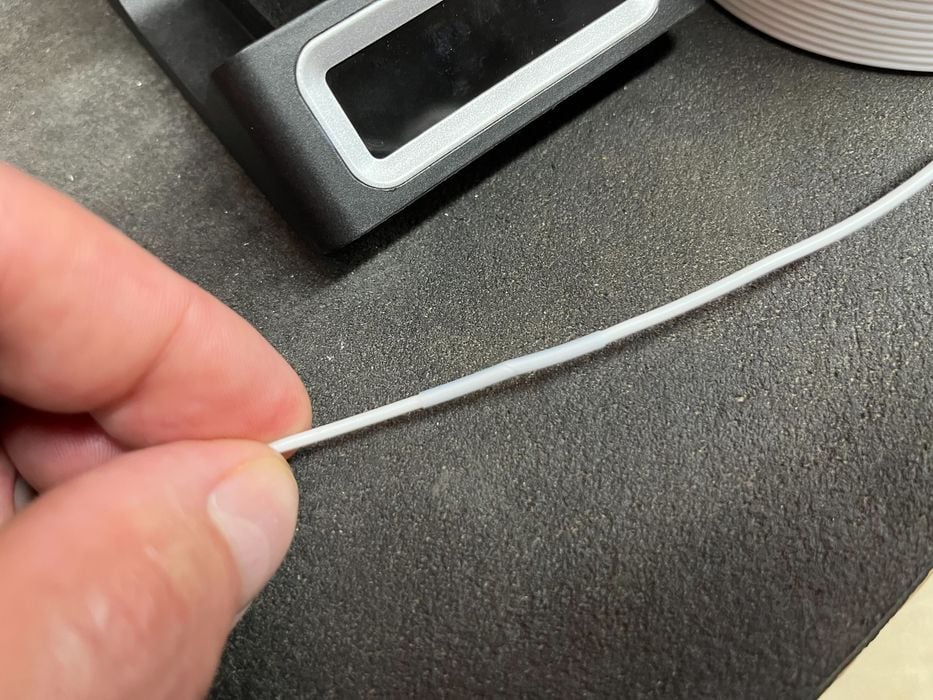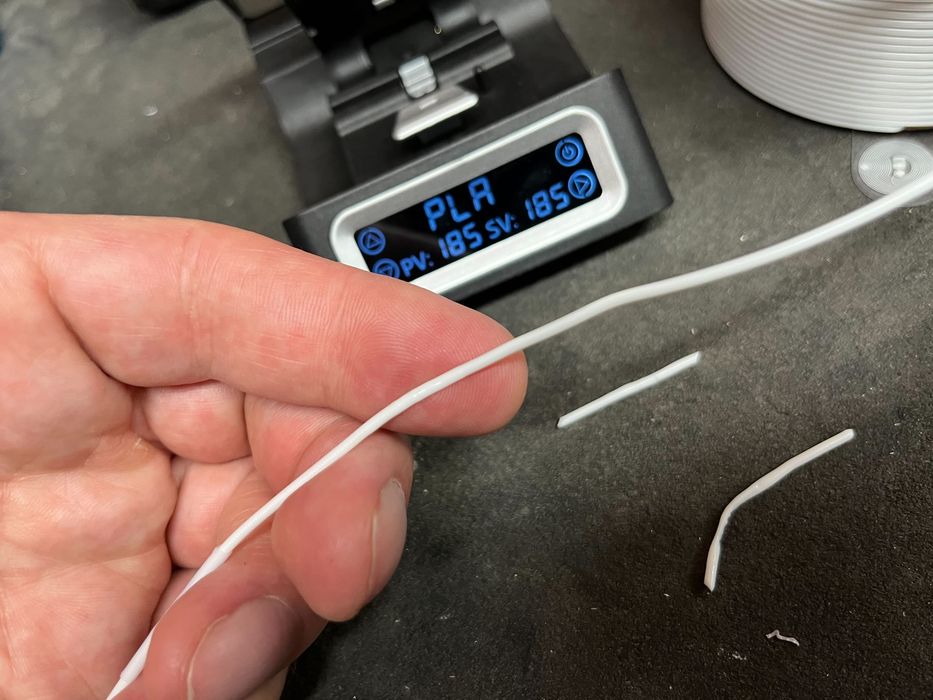
We tested the new FC01 Filament Connector from SUNLU.
What on Earth might a Filament Connector be? It’s exactly that — a small accessory that connects two pieces of filament.
That might seem like a ridiculous thing to do, but in truth it is actually an extremely useful function, as you will see. It solves a problem we all have, but tend to ignore.
That problem is leftover filament.
It’s almost certain that the print you just completed did not actually completely empty the spool of filament. In the thousands of print jobs I’ve run over the past decades, I’ve had only one that by chance ended with a few centimeters of filament sticking out of the extruder. I was very lucky then, as machines in those days didn’t have filament-out sensors.
Because of this we tend to accumulate spools with just a small amount of filament on them. I confess I have probably a dozen or more lying around the lab.
In theory this shouldn’t happen because modern desktop FFF 3D printers almost always have filament-out sensors. These will pause the machine when the filament runs out, allowing the operator to swap in a new spool — and use up all the filament on the first spool.
But we still collect almost-empty spools anyway. That’s because when we start jobs we usually want to reduce the operator interventions required and pick the full spools instead.
So what can we do with these near-empty spools of filament?
Enter the SUNLU FC01 Filament Connector. With this device it is possible to take all those short filament segments and connect them together. That will form a larger spool of filament that you will be more likely to use.
The chemistry of joining filament segments is straightforward: thermoplastics need only some heat to become soft, and then they bond with neighboring material. That’s what the FC01 does: it brings the two ends together, and melts them into a complete filament.

The FC01 requires the use of short teflon tubes to create a defined cylindrical space where the melting and joining takes place. The procedure is to put one end of each filament into the tube, and then place the tube and filaments into the FC01.
The FC01 has presets for a variety of common FFF 3D print materials, including PLA, ABS and PETG, and can handle any filament up to 240C. The PLA setting, for example, is 185C.
The device heats up in only three minutes, and the two ends are quickly bonded together.
Hold on, how do you get the teflon tube off the filament? Fortunately SUNLU provides simple mechanism to remove the tubes after connecting filaments. On the back of the machine there is a way to close the device and a blade cuts a slit in the tube, after which it easily comes off. Note that these tubes are not considered reusable, and the FC01 comes with a bag of them. You may have to purchase more later if you’re doing a lot of connecting.

This results in pretty competent unified filament, as you can see here. We printed this filament afterwards, and it worked perfectly, as you might imagine.
There is one consideration when using the FC01: spooling. You should be unspooling the two filaments before joining, and then re-spooling the unified filament back onto a single spool afterwards. This means you should have some type of apparatus to do spooling, especially if the filaments are relatively long. It can be done by hand, but often you may be connecting many segments together to create a longer filament.
There are many freely downloadable filament spooling contraptions available on popular 3D model repositories, so you can choose one that fits your needs. Some are even powered, which I’ve been using to move entire spools to new formats to fit into spool switching units.
You must also consider material type and color.
Leftover filaments could very well be made from different materials, and you must ensure that all filament segments are identical material. You can’t join ABS to PLA, for example, as these materials have different temperature requirements. This should be obvious, but if you’re like me, many of your leftover spools might not have proper labels. In that case you should carefully examine the filament to determine the material type.
As for color, this may or may not be important. If you’re just printing mechanical parts, color might not matter where function rules. On the other hand, maybe you want to ensure the colors are identical.
That’s easier said than done, because filament colors are not always the same. Is that white the same as this other white? It may not be, especially if the manufacturer is different.
On the other hand, maybe you WANT the colors to be different. You could, for example, create your own rainbow effect by arranging different colors in a sequence.
As you can see, the FC01 is quite a versatile device, and should open up many possibilities for using that leftover filament taking up space in your workshop.
At a price of only US$46, it’s an accessory that every FFF 3D printer operator should own.
Via SUNLU
